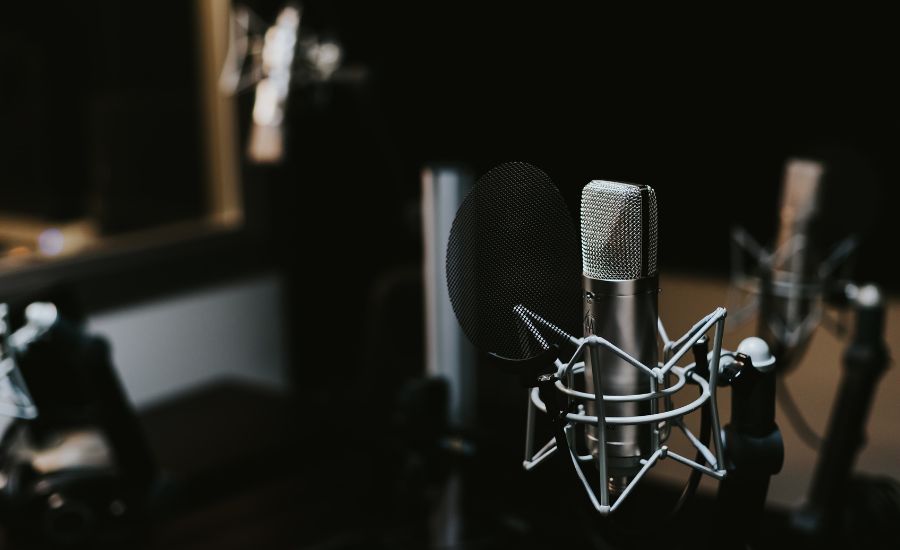How To Start A Podcast Business For Free With My Phone?
Podcast is a new reality in the world of entertainment with over 2.8 million active podcast production globally. Today with all the variety of resources available, it is not hard to start a podcast business and be profitable.
The podcast Business requires a lot of focus on the content and quality which can make or break your business. It requires a clear voice which definitely needs a very sensitive mic and good-quality audio editing software.
There are thousands of options available but it is often confusing to choose one which suits your budget and provides awesome quality work. To help you with this software, let’s into best software and how you can start a podcast business for free with just a smartphone.
Can I Start A Podcast For Free With My Phone?
Yes, you can start a podcast for free using your phone. There are various mobile apps available that allow you to record and edit audio, such as Anchor, Spreaker, or GarageBand. Additionally, you can use free platforms like SoundCloud or YouTube to host and distribute your podcast episodes.
11 Key Steps To Start A Podcast Business
Starting a podcast business can be an interesting endeavour for those who enjoy audio content and storytelling. You can build a successful podcast business that captivates listeners and builds a loyal following with careful planning, high-quality production, and a focus on audience engagement. Here are the important stages to starting your own podcast business:
- Identify Your Niche: Determine your target audience and the topic of your podcast. Choose a specialty or topic that corresponds to your interests, expertise, and audience desire.
- Set up a Brand and Name: For your podcast business, create a distinct brand identity, including a recognizable name, logo, and overall visual aesthetic. Make sure your brand matches the tone and ideals of your podcast.
- Prepare Your Content: Outline your podcast episodes’ format, style, and structure. To be organized and consistent in delivering compelling episodes to your audience, create a content calendar.
- Purchase Quality Recording Equipment and Software: Purchase good-quality recording equipment such as a microphone, headphones, and audio editing software. To publish and distribute your episodes, select a reputable podcast hosting site.
- Make Eye-Catching Artwork and Descriptions: Create attention-grabbing podcast cover graphics that appropriately depicts your show. Create captivating episode summaries and descriptions to attract new listeners and improve searchability.
- Launch And Publish: Choose a release date for your podcast and submit it to prominent podcast directories such as Apple Podcasts, Spotify, and Google Podcasts. Make sure your podcast is correctly labelled and classified for optimum exposure.
- Create an Online Presence: For your podcast, create a website or landing page where listeners may access extra information, show notes, and contact information. Use social media to promote your podcast and interact with your listeners.
- Monetize Your Podcast: Explore various monetization strategies, such as sponsorships, advertising, merchandise sales, or listener donations. Consider partnering with relevant brands or platforms to generate revenue.
- Engage with Your Audience: Foster a strong connection with your listeners by encouraging feedback, responding to comments, and incorporating listener suggestions into future episodes. Build a community around your podcast through social media groups or online forums.
- Continuous Improvement: Regularly evaluate your podcast’s performance, gather listener feedback, and refine your content and production quality. Stay updated on industry trends and experiment with new ideas to keep your podcast fresh and engaging.
Also Read: How To Start A Private Label Rights Business?
5 Podcast Software For YouTubes & Podcast Businesses
1. Adobe Audition
Adobe Audition is a part of Adobe Creative Cloud(CC) which allows you to record multiple recordings at a time by using different microphones. It is quite a famous professional-grade recording editing software for podcasts.
It comes with amazing features that you will make your life easy while editing your recordings and offers royalty-free music. You can use it to create podcasts with different features such as processing treatment, individual audio EQ and gain levels for each vocal during post-production.
Apart from that, it adds amazing sound effects plus reduces the background noise which helps you record podcasts like a professional recorder. This can be a game changer if you are doing indoor podcast recording.
Features
- Royalty Free Music
- Single & Multitrack Recording
- Exclusive Editing Tools for audio mixing and background noise reduction
- Comes with in-built preset options for new podcasters
- Live monitoring during recording
- Professional-quality audio with the Essential Sound Panel
- Keep podcast’s overall volume at the same level to match the loudness of other speakers.
Pros
- Thousands of Tutorials for understanding the software
- Adobe Premiere Pro – Easy Integration
- Support High-Quality Recording on More Than 30 Tracks
- Get 50+ sound effects for your recordings
- Great customer support
Pricing
For new customers, it offers a 7 Day Trial period. The Paid software will cost you $20.99 per month.
2. Riverside
Riverside can be an ideal option for beginner podcasters as it offers a variety of features where you can invite up to 7 guests to your podcast recording no matter where they are living.
With its local recording feature, everything will be recorded on your devices – meaning you won’t have issues with bad internet connectivity, lags or unwanted background noise.
Apart from the multiple guest invitation option, it offers you high-quality 4K video recording features and uncompressed 48KHz audio resolution which is ideal for podcast business.
You can also record videos separately for each of the invited guests. This is the best feature as it allows you to edit areas if there is any problem with the video recording from your guest camera.
Features
- Screen Sharing Tools
- Shared Production For Enterprise Users
- High-resolution remote local recording
- WAV or MP3 audio recordings at up to 16 bit 48 kHz
- Mobile podcast recording app for iOS, iPad, and Android
- Live streaming and live call-ins
- Automatic podcast transcription
- 7+ Participant can join in one recording
Pros
- Offers High Quality 4K Video Recording
- Streamlined recording and editing on one podcast software
- Efficient & Friendly Customer Support
Pricing
Riverside offers you multiple plans where you can choose the Free plan or choose the paid plan. The paid plan will cost you $15 per month for standard, $24 per month for pro and the Enterprise plan which is available on request.
3. Audacity
Audacity is free recording software that is compatible with all devices like windows and MacBook. It offers basic recording and multiple editing features which can be ideal for beginner podcasters and YouTubers.
However, its interface might look a little outdated compared with all the other available software. Because of the outdated interface, you might find it difficult to use if you are a complete newbie but it works great.
Features
- Beginner Friendly Interface
- Single & Multitrack Recording
- Tools for audio mixing and background noise reduction
- Offers Library of Audio Effects
Pros
- Open Source Platform
- Record Live Audio – use a microphone or a mixer
- Support Commonly Used Media File Formates
Pricing
Audacity is an open-source audio editing software and that is why it is 100% free.
4. GarageBand
GarageBand is apple’s free Digital Audio Workstation (DAW) choice for podcast recording which focuses mainly on music production. It also allows to arrangement and combines multiple audios into a single podcast.
It is an ideal option for music production houses where you can easily create separate tracks for intro and outros, music, ad spots and many more. After creating your recording, you can adjust settings at your convenience.
Features
- Best For Beginner
- Comes with in-built preset options for new podcasters
- Live monitoring during recording
- Professional-quality audio with the Essential Sound Panel
- Offers Large sound library for audio effects
Pros
- User Friendly Interface
- Apple MacBook Friendly
- You can change the pitch and velocity of tracks
Pricing
GarageBand is available on Apple’s app store which is totally free.
5. Restream
Restream was founded in 2015 by Andrew Surzhynskyi, and Alexander Khuda and is designed to help streamers reach a wider audience.
Restream is a versatile software package for podcast recording studios. It provides all the tools necessary to customize the audio track in terms of sound effects, music and music. You can also record audio and video with the restream dashboard, without having to go live.
Features
- No limit on your live session
- Echo Cancellation
- On Screen Caption and Comments
- Offer data from Restream Analytics
- Access to Restream Chat (a tool that allows you to combine your chats across all of your streaming platforms).
Pros
- Get exclusive features with a free plan
- All features are available in the web-version
- Over 30 platforms supported
- Multistream Analytics
- Streaming pre-recorded video
Pricing
For new customers, it offers a 7 Day money-back guarantee. The Paid software will cost you $16 per month.
Frequently Asked Questions(FAQs)
Which is the Best Podcast Editing and Recording Software?
Adobe Audition is the best podcast editing and recording software which allows you to record multiple recordings at a time by using different microphones.
Which is the Best Free Podcast Editing and Recording Software?
Audacity and GarageBand are the Best Free Podcast Editing and Recording Software.
Conclusion
Starting a podcast business can be fun but if we talk about choosing software then it is really difficult to choose one. As the current market has a number of podcast editing software and each one has its own set of uniqueness and features.
I personally recommend you use Adobe Audition as it is the most commonly used software for all podcast business owners. With its amazing set of features and sound effects, it is a great option to for.
However, if you have a tight budget, then I recommend you to start with Audacity or GarageBand as they have all the basic features which you need while editing your audio recording.
Finally, the decision depends on the budget and features you are looking for.




